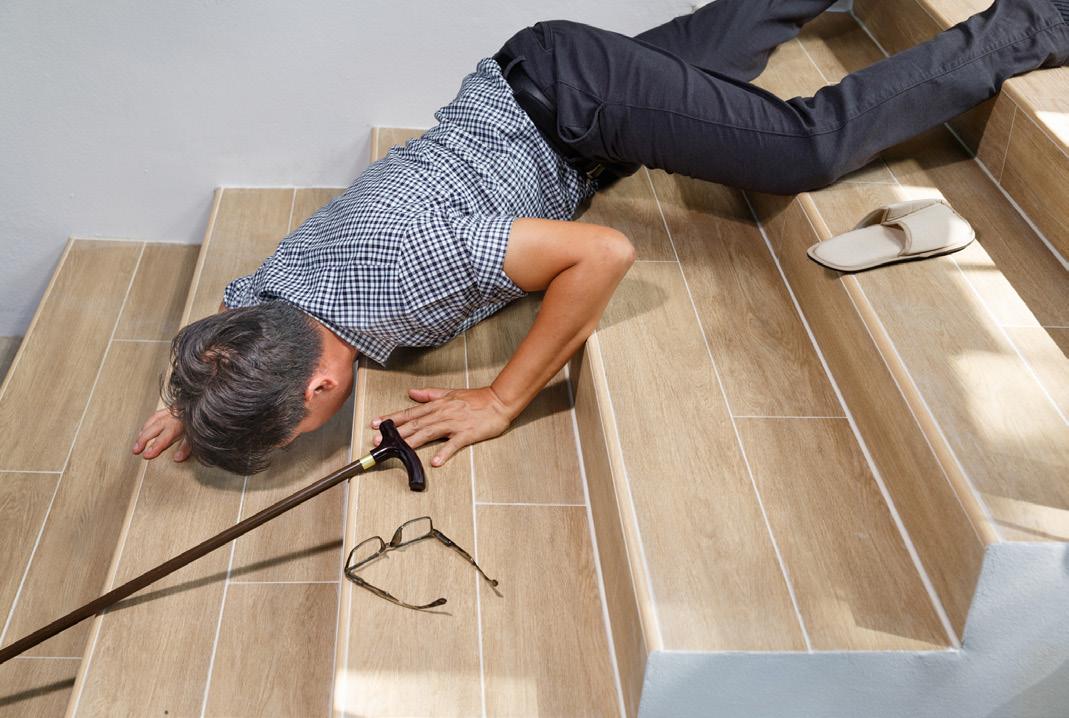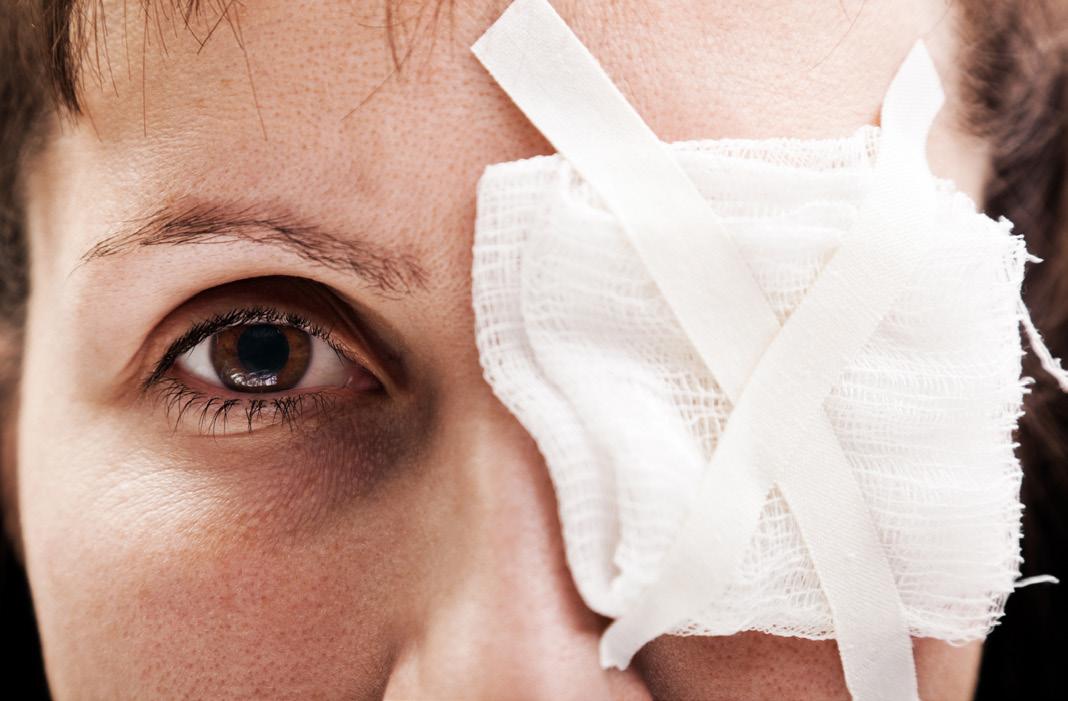
3 minute read
How to Achieve Patient Satisfaction after Refractive Cataract Surgery
Refractive cataract surgery can help prevent this very kind of situation.
Cataract Surgery by Olawale Salami
Besides visual acuity, patients demand a better quality of life after cataract surgery. At the American Academy of Ophthalmology (AAO) 2020 Virtual — held on November 13 to 15 last year — among the interesting topics discussed during one of the symposiums was how to provide patient satisfaction after refractive cataract surgery.
Preventing falls and reducing morbidity
According to Dr. Daniel Chang of the Empire Eye and Laser Centre, California, USA, in routine cataract surgery, they start by extracting cataracts, and then they use glasses to correct astigmatism and presbyopia. “But in refractive cataract surgery, we try to do all these at the same time, surgically. Therefore, we should ask ourselves, what is the added advantage? Does refractive cataract surgery offer convenience for the patient,” he asked the audience.
“By offering refractive cataract surgery, we can help prevent falls and reduce morbidity and mortality in our patients,” said Dr. Chang.
“When we think about the option of refractive surgery in each patient, we try to weigh the risks and benefits,” he shared. Fundamentally, presbyopia treatment for each patient is not optional and will be treated either surgically or with glasses. “We consider convenience, patient satisfaction, safety, and quality of life from the surgical perspective, but we worry about the quality of vision, cost, night-vision symptoms and operating time,” he explained.
On the other hand — as Dr. Chang elaborated — glasses’ benefits include noninvasiveness, adjustability, and fashion. However, risks include limited peripheral vision, depth perception, nose/ear irritation, and edge contrast sensitivity.
The loss of edge contrast sensitivity and depth perception increases the risk of falls in patients using bifocal glasses. In the elderly, this is a particularly essential
data that suggests that over a third of falls in the elderly are attributed to depth perception problems with bifocal glasses.
These multifocal glasses-related falls result in over 250,000 hospitalizations and over 10,000 deaths. Those patients who are not injured develop post-fall anxiety syndrome. Overall, the impact of multifocal glasses-related falls in the United States is about 10 Billion USD every year. “Modeling has shown that if we adopted universal surgical correction of presbyopia in all patients, these would result in annual cost savings of about 14 Billion USD,” concluded Dr. Chang.
Managing expectations of unhappy patients
In the world of refractive cataract surgery, there are so many happy patients, according to Dr. Russel Swan, adjunct assistant professor at the University of Utah, USA.
“However, occasionally, we find a patient who has some degree of frustration, and we want to find a way to turn this frown into a smile,” he emphasized. “It is important to assess for possible occult macular pathology,” explained Dr. Swan.
“Identifying patients who will be poor candidates for refractive cataract surgery goes a long way in reducing patient frustration,” explained Dr. Swan. There are many reasons for this, like irregular astigmatism or higher-order corneal aberrations or occult macular pathology. Preoperative testing should include topography, ACT, tear film analysis, aberrometry, K’s, and lens analysis.
“If we identify irregular astigmatism with a curable cause, such as Salzmann’s nodular degeneration, we can improve their higher-order corneal aberrations by repairing this or performing pterygium repair before cataract surgery,” added Dr. Swan.
Preoperatively, it is also necessary to explain to patients that lenses have clarity and flexibility characteristics. Therefore, the limitations of glasses after cataract surgery must be well explained, vis-à-vis patients’ lifestyles to understand their postoperative expectations.
“Intraoperatively, some factors could be considered to improve patient satisfaction. These include the precise capsulotomy technique and the use of intraoperative aberrometry,’ Dr. Swan explained.
“Overall, by far, the most common cause of low patient satisfaction is an uncorrected refractive error. Secondly, ocular surface diseases, like dry eyes, represent important causes of low patient satisfaction, which can be easily treated with medications and environmental modifications to maximize patient comfort,” he added.
Editor’s Note:
A version of this article was first published in CAKE & PIE POST AAO 2020 Edition (Issue 4, page 4).









